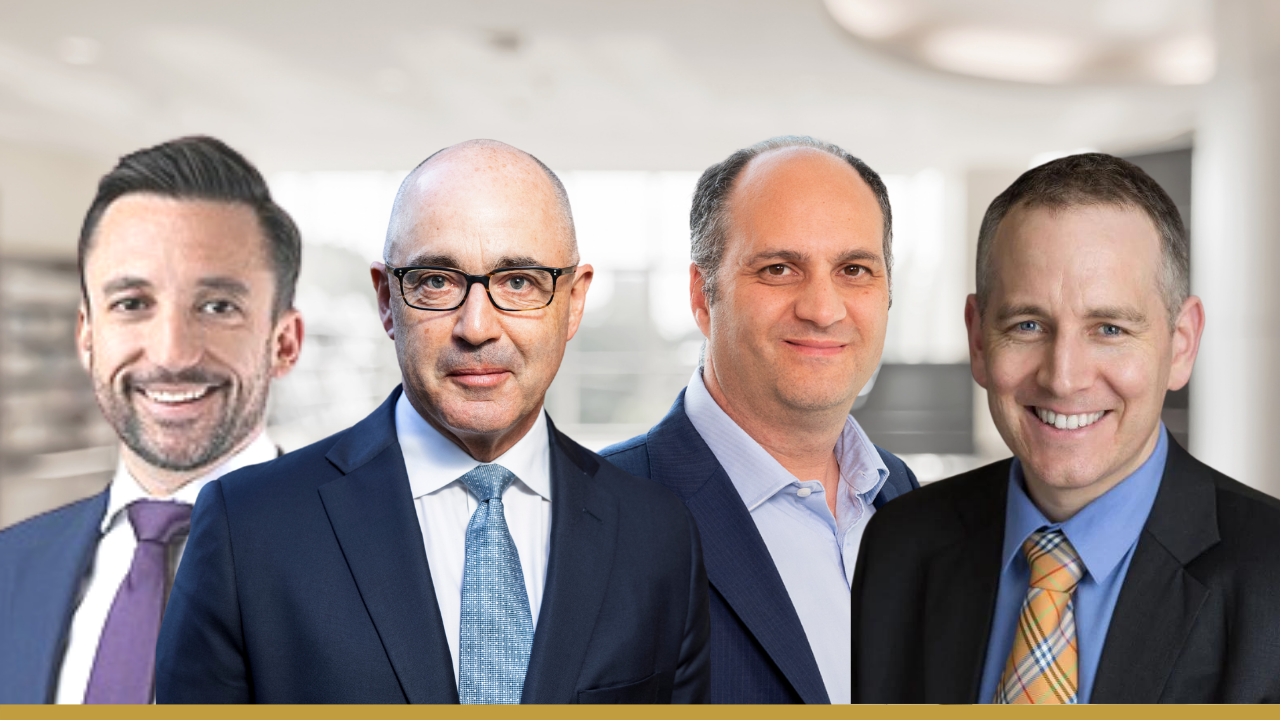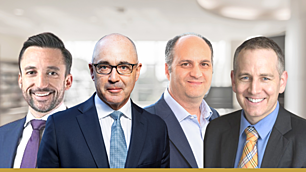Where to invest as volatility persists and recession fears loom
In the final part of this collection, we turn our attention to some of the types of assets our four contributors are using to construct portfolios or to advise their clients.
To recap, in part one they discussed the ongoing relevance (or not) of the 60/40 stock/bonds split long favoured as the ideal balanced portfolio.
.png)
And in part two, they detailed their views on how the volatility in bond yields in recent months has influenced allocations within investor portfolios.
.png)
Below, our four contributors name an area of the market they believe all investors should consider. I also asked the two fund managers how they’re currently positioned.
- Alexandre Ventelon, head of research and investment strategy Australia, Morgan Stanley Wealth Management
- Simon Doyle, CIO and head of multi-asset, Australia, Schroders Australia
- Jerome Lander, chief investment officer, WealthLander
- Chad Padowitz, Talaria Asset Management.
Each makes the case for at least a couple of assets or sectors. In the following wire you’ll find out what ticks their boxes, whether hedge funds or Gold, Quality stocks or Alternatives – or something else entirely.
Where to invest as easy money ends?
Alexandre Ventelon, Morgan Stanley Wealth Management
We see attractive segments in hedge funds, which we believe are among the most effective ways to achieve additional diversification within portfolios. Hedge funds have also historically outperformed traditional fixed income in periods of rising rates and equities during equity bear markets.
The “easy” financial conditions we’ve had for more than a decade created lower market volatility, with “cheap” money something of a panacea for lower-quality companies. But the inflation shocks that have emerged and the subsequent tightening of monetary conditions by central banks has begun to reverse this dynamic. This type of environment usually favours:
- long/short equity funds,
- relative value bond funds and
- market neutral strategies.
These strategies typically need a wide dispersion in value between their long and short positions for the associated trades to be profitable and to offset the costs of running them. This is essentially why we have been recommending these sub-asset classes for more than a year now, with a preference for market-neutral currently.
In particular, our Core+ model portfolios include an allocation to the Sage Capital Absolute Return Fund, which is a market neutral strategy. This allocation has been particularly suitable for the equity and bond sell off we have seen this year. The fund has returned around 7.5% year to date while the ASX 200 Total Return Index and the Bloomberg AusBond Composite Index have fallen around 3% and 8% respectively.

Losers will become winners
Simon Doyle, Schroders
I believe we are seeing a fundamental shift in market dynamics, as central banks in particular grapple with how to bring down inflation – the opposite problem to the one they’ve had since the Global Financial Crisis.
What does this mean? The wall of liquidity that fuelled speculative pricing in areas such as profitless tech, buy-now-pay-later, cryptocurrency and other sectors is no longer there, and we are seeing this play out as these types of investments are hit the hardest.
To put some numbers on it,
- BNPL company Zip Co (ASX: Z1P) has seen its share price decline from close to $14 to $0.88 (-94%),
- Netflix has fallen to $181 from $691 (-74%) and
- Bitcoin is down to $28,974 from close to $67,734, ( -57%).
On the other hand, the relative losers over the last few years will also perform much better going forward. Here I’d suggest fundamental research and active stock selection will be rewarded over passive strategies for the most part.
Within this space, high-quality companies with pricing power and which can maintain margins in a higher inflation / rising cost environment will also likely perform well.
Volatility has also risen and will likely remain elevated, and this will provide increased opportunities for tactical asset allocation to generate more consistent above-benchmark returns. In short, I think the environment will favour investors, not speculators – so do your research.
In terms of our positioning, we manage both a traditional 60/40 balanced portfolio (Schroder Strategic Growth Fund) and objective-based multi-asset funds (Schroder Real Return Fund). Both are defensively positioned – and have been for much of the year. We cut our equity positions aggressively through the March quarter, largely reflecting a disconnect between optimistic valuations (especially in the US) and growing concerns about inflation and the need for significant policy tightening. The Russian invasion of Ukraine exacerbated the macro risks.
We began the year with minimal duration but added some back as the market began pricing in central bank tightening. That said, we are now (in mid-May) broadly neutral positioned from a duration perspective.
To put numbers on it, in the Strategic Growth Fund we are underweight equities by around 6%, and overweight cash by 6%.
In the Schroder Real Return Fund, we have total exposure to equities of around 20% and around 33% in cash. We have added back some duration but at levels well below the peak duration of two years ago.
The appeal of Gold
Jerome Lander, WealthLander
Gold has outperformed equities and bonds in recent months and may still provide a balancing and useful return over the medium to longer-term from here.
We value the liquidity given we dynamically alter our weightings and hence prefer gaining exposure to allocated gold through one of the reputable ETFs with which we can easily trade our portfolio weightings. Direct investors could also consider a small amount of physical gold exposure. Gold stocks also provide some higher risk precious metals exposure mixed (with other equity-like risk exposures) and when chosen actively can also provide good potential for value-adding returns. Regardless of how one gains exposure, the point we’d make is having some exposure is generally much better than having none.
We think good Alternatives are also worth considering, for no other reason than to reduce the concentration risk of owning only equities, property and bonds. Good alternatives can be highly competitive in their own right with traditional risk assets such as equities and property but may also reduce the risk of catastrophic losses in the event of a market collapse.
The Alternatives we prefer currently are:
- What we classify as “event-driven strategies,” which is anything with a potential catalyst or re-rating opportunity that doesn’t depend heavily on market returns
- Convertibles (which provide a yield and lower risk exposure than equities), and
- Commodities and precious metals (which we generally still consider medium-term attractive due to underinvestment and geopolitical frictions).
Big pharma as a defensive play
Chad Padowitz, Talaria Asset management
Our process leads us to companies and indirectly sectors that are attractively priced for the given risks. At this time our portfolio has a large weighting to Global Healthcare, primarily large pharmaceutical companies. These companies benefit from a unique combination of attributes well suited to this environment. They are not overly impacted by slowing economic activity or higher interest rates. They trade at very reasonable to cheap valuations, very strong balance sheets and long-term pipelines of well-funded research and development.
The wrap-up
While inflation continues to rise, even amid suggestions the US is nearing a peak, concerns now focus on a potential growth slowdown and continuing fears of a recession. With that in mind, it makes perfect sense that defensive assets – including big pharmaceutical companies in the case of the equities fund manager – are firmly held by each of the above contributors.
Stay up to date with this series
Make sure you "FOLLOW" my profile to read the other parts of this series. In part one, they considered the ongoing relevance of the 60-40 balanced portfolio. And in part two, our contributors discussed whether rising bond yields should change the way investors think about fixed income allocation.
3 topics
1 stock mentioned
1 fund mentioned
5 contributors mentioned

